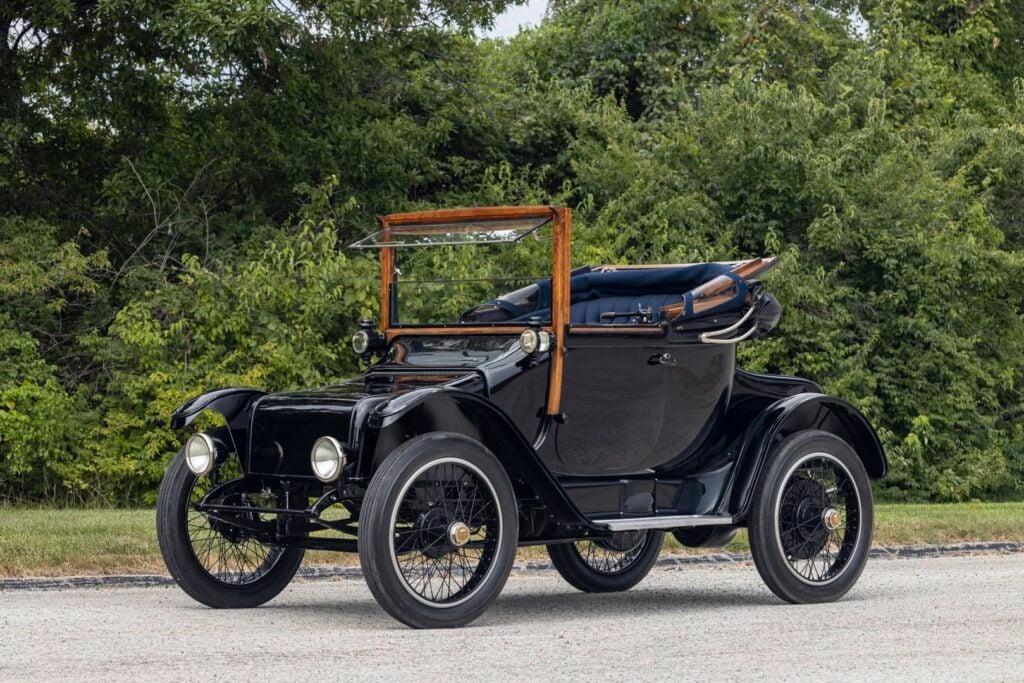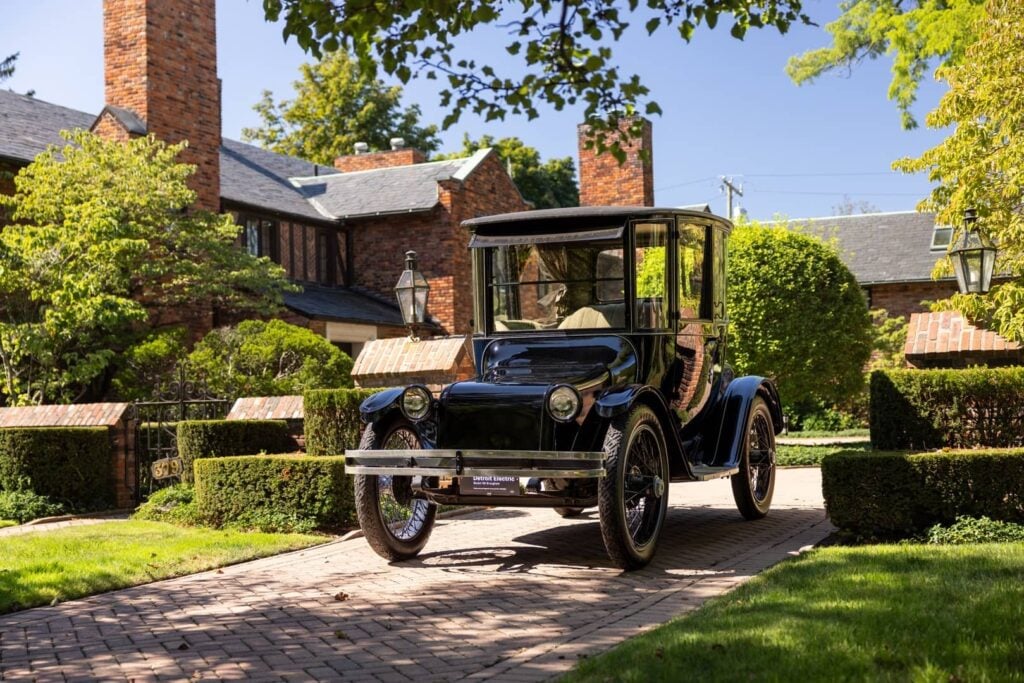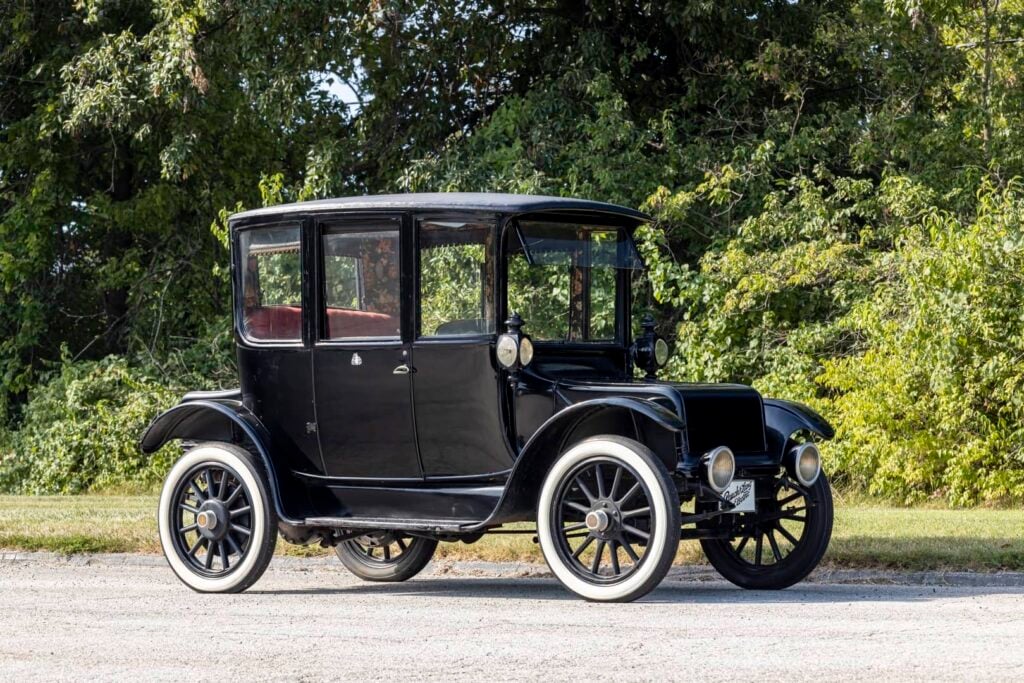Vintage EVs from RM Sotheby's
The early 20th century hosted a fierce, forgotten technological contest for the future of transportation, where the quiet, clean, and luxurious electric vehicle stood as a formidable rival to the noisy, hand-cranked gasoline car. Models like the highly refined Rauch & Lang C55 Double Control Coach defined this era, catering exclusively to the wealthy urban elite who prized effortless operation and formal, enclosed design. However, the EV’s initial market dominance ultimately succumbed to battery limitations and the superior range and mass production of internal combustion engines, causing electric vehicles to vanish from the mainstream by the 1920s.
Today, this short-lived golden age of electric motoring has made these vehicles exceptionally rare and highly sought after by collectors. Antique EVs are tangible pieces of alternative history, prized for their unique engineering, elegant craftsmanship, and the compelling story of a future that almost was. RM Sotheby’s will offer three different antique EVs for sale at their upcoming auction in Hershey, PA so what better chance than now to discuss the historical significance of these models.

Produced by the Anderson Electric Car Company, the Detroit Electric brand was synonymous with elegance, ease of use, and, crucially, cleanliness – it lacked the noise, fumes, and arduous hand-cranking required by its gas-powered rivals.
Introduced just as the golden age of electric vehicles was beginning to wane, the 1917 Detroit Electric Model 62A Cabriolet represents a stylish and ultimately defiant statement against the rising tide of petrol. Unlike the company’s traditional closed-cabin broughams, which favored privacy and formality, the Model 62A was a two-passenger convertible. It offered a new kind of freedom, combining the effortless driving of an electric vehicle with an open-air, sporty design. More than just the story of a car, the Detroit Electric Model 62A Cabriolet represents a snapshot of an exclusive lifestyle and a technologically advanced, battery-powered vision of the future that was about to be overtaken by the gasoline engine.
Estimate: $190,000 – $220,000

The Detroit Electric Model 68 Brougham stands as an iconic symbol of the early electric vehicle movement, epitomizing silent luxury and urban mobility for America’s wealthiest residents before and after World War I. This high-bodied, fully enclosed vehicle was meticulously designed for formality, privacy, and effortless operation, quickly becoming the epitome of luxury for affluent city dwellers, including Clara Ford and Thomas Edison. Its unparalleled convenience made it an absolute favorite, particularly among women drivers who cherished its clean, quiet, and intuitive lever controls, a stark contrast to the demanding gasoline cars of the era.
The 1917 Model 68 Brougham reached the zenith of electric car refinement, representing its final valiant attempt to compete against the rapidly escalating internal combustion engine. Its spacious, enclosed cabin boasted opposing seating, and it often relied on Edison nickel-iron batteries capable of delivering ranges that occasionally surpassed 80 miles on a single charge. Despite its technical brilliance as a vehicle for urban transportation, its exorbitant cost, far surpassing that of a Ford Model T, limited its market to an exclusive clientele. The Model 68’s history underscores this stark contrast: a refined vehicle that provided superior city travel, yet ultimately succumbed to the momentum of the gasoline engine’s mass production and long-distance capabilities.
Estimate: $50,000 – $70,000

The Rauch & Lang C55 Double Control Coach, built by one of America’s oldest coachbuilders, was a formidable competitor to the Detroit Electric in the high-end electric vehicle market. While gasoline cars were becoming necessities, the C55 catered exclusively to wealthy urban clients who prioritized quiet operation, cleanliness, and exclusive luxury. Its most distinctive feature was the Double Control system, which offered maximum flexibility by allowing the car to be operated from two positions, whether by the owner or a chauffeur.
Introduced in 1921, the C55 arrived just as the EV market fight was ending, making it a highly refined example of a dying segment. It boasted superior build quality and luxurious appointments, like fine upholstery and intricate woodwork, differentiating it from the simple, mass-produced Ford Model T. Though technically sublime for smooth urban travel, battery limitations and the increasing demand for long-distance touring made the C55’s sophisticated design economically unsustainable. The 1921 Rauch & Lang C55 thus illustrates the ultimate refinement of the electric automobile just before it vanished from the mainstream for the next half-century.
Estimate: $100,000 – $130,000
